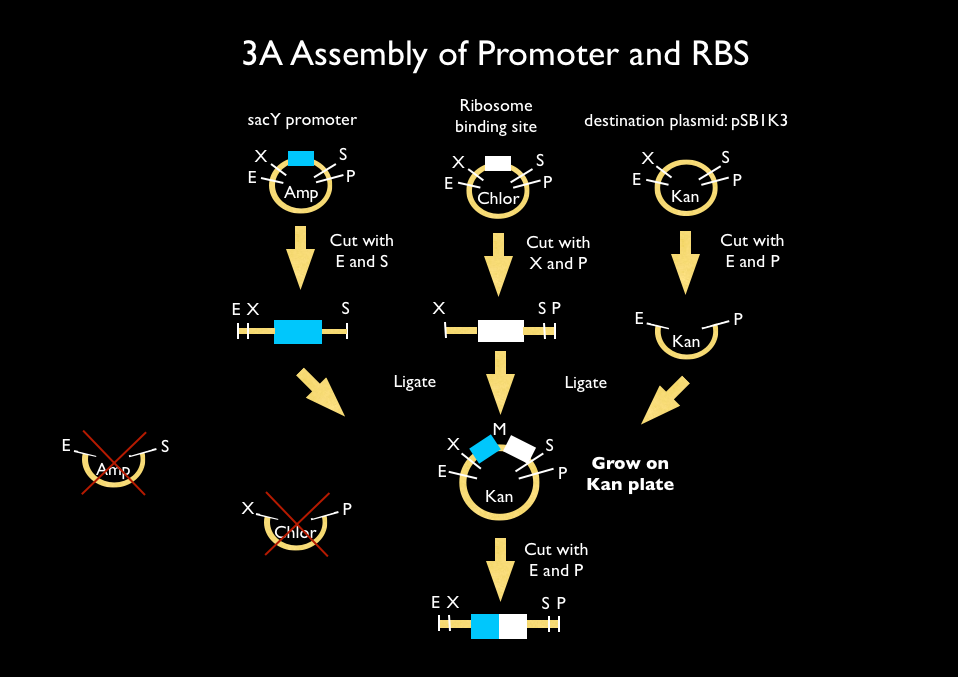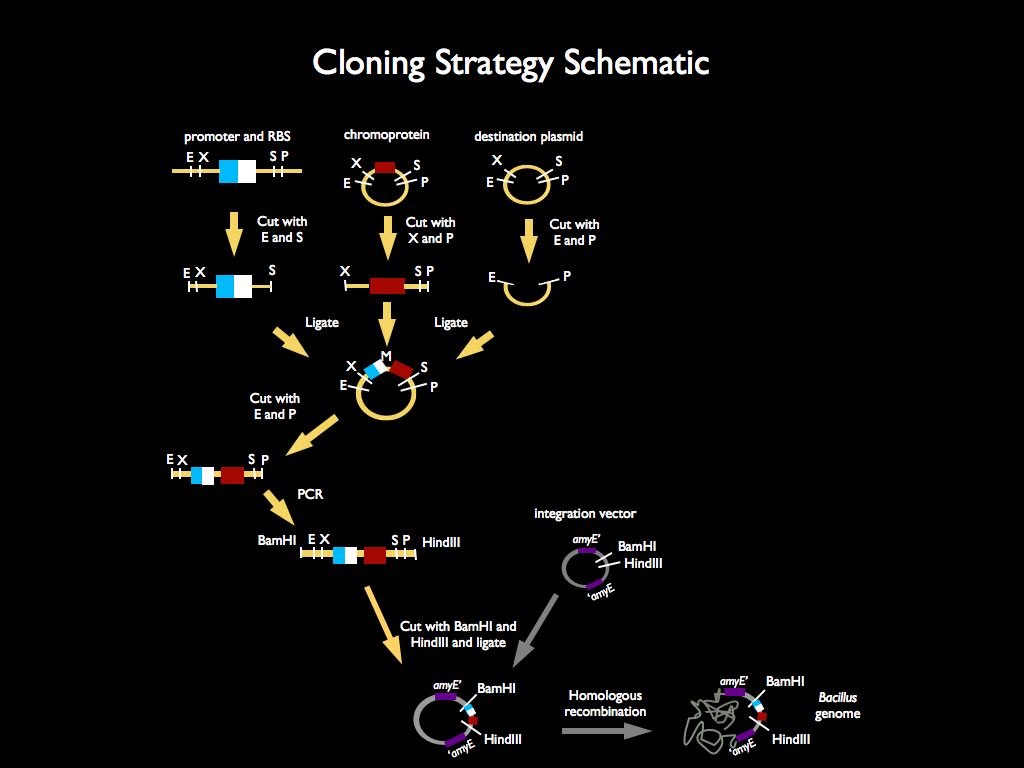Team:Stanford-Brown/Projects/EuCROPIS
From 2013.igem.org
(→Construct Assembly) |
(→Construct Assembly) |
||
| Line 12: | Line 12: | ||
[[File:FigureA.jpg|center]] | [[File:FigureA.jpg|center]] | ||
| - | '''Figure A''' | + | <div class="center" style="width: auto; margin-left: auto; margin-right: auto;">'''Figure A'''</div> |
| + | |||
[[File:FigureB.jpg|center]] | [[File:FigureB.jpg|center]] | ||
Revision as of 22:52, 22 September 2013
Contents |
Introduction
Imagine taking synthetic biology to space? In 2011, the Brown-Stanford iGEM team did just that, designing a synthetic-biology based Mars colony. At the center of the concept was PowerCell, a consortium of a photosynthetic, diazotrophic (nitrogen-fixing) cyanobacterium engineered to secrete sucrose, and a "production cell".
Construct Assembly
We began by researching and identifying genes associated with sporulation, germination, and sucrose induction in Bacillus subtilis. We decided to focus on sacY, a gene the regulates sucrose induction and is itself induced by the presence of sucrose, and spo0A, a gene that regulates sporulation by influencing more than 500 genes related to sporulation. We attempted to isolate the genes from the genome using PCR with mixed results. We decided instead to construct the two promoters by annealing complimentary oligos from Elim, and using PCR to add the BioBrick ends.
We used 3A assembly to add a ribosome binding site from the registry (BBa_B0034) directly downstream of our sacY promoter (see Figure A). We isolated (word choice?) our construct using an E/P digestion. We then proceeded to another 3A assembly to add a red chromoprotein (eForRed: ) downstream of the sacY promoter and ribosome binding site. Likewise we did another assembly in parallel to add a red fluorescent protein (Figure B) downstream of the sacY promoter and ribosome binding site from Figure A. We then used primers from Elim and PCR to add the restriction sites BamHI and HindIII to either side of our constructs. In addition, we ordered two constructs from DNA 2.0: the sucrose inducing promoter linked to eForRed and the sporulation regulator promoter linked to aeBlue. These constructs were also flanked with the restriction sites BamHI and HindIII This allowed us to do a ligation into a Bacillus subtilis integration vector (pDG1662). We transformed into electrocompetent Bacillus cells.
Plasmid Assembly Using SDM
BioBricks
1. BBa_K1218001 (pSB1C3): This part is the sacY promoter; sacY is a gene that regulates sucrose induction in Bacillus subtilis.
2. BBa_K1218020 (pSB1K3): This is a compound part containing the sacY promoter (BBa_K1218001: a sucrose inducer in Bacillus subtilis) and a ribosome binding site (BBa_B0034).
3. BBa_K1218021 (pSB1C3): This part is the spo0A promoter; spo0A regulates sporulation in Bacillus subtilis.
4. BBa_K1218023 (pSB1C3 - testing now): This composite part contains sacY (BBa_K1218001: a sucrose inducer in Bacillus subtilis), a ribosome binding site (BBa_B0034), and eForRed, a red chromoprotein developed by Uppsala (BBa_K592012). We intend to use it as a chromogenic reporter induced by sucrose.
5. BBa_K1218025 (pSB1K3): This composite part contains sacY (BBa_K1218001: a sucrose inducer in Bacillus subtilis), a ribosome binding site (BBa_B0034), and a red fluorescent protein (BBa_E1010). We intend to use it as a chromogenic reporter induced by sucrose.
Acknowledgments
Ryan Kent, Joe Shih, Lynn Rothschild, and Kosuke Fujisima -- primary advisors
Gary Wessel -- advice on testing construct
Daniel R. Zeigler, Ph.D., BGSC Director and the Bacillus Genetic Stock Center -- Free strains of Bacillus integration vectors
Rocco Mancinelli -- Feedback on our presentation, papers about the EuCROPIS mission
Lilah Rahn-Lee -- Advice on choosing B. subtilis genes
Elwood Agasid -- Explanation of EuCROPIS mission from an engineering perspective
 "
"

